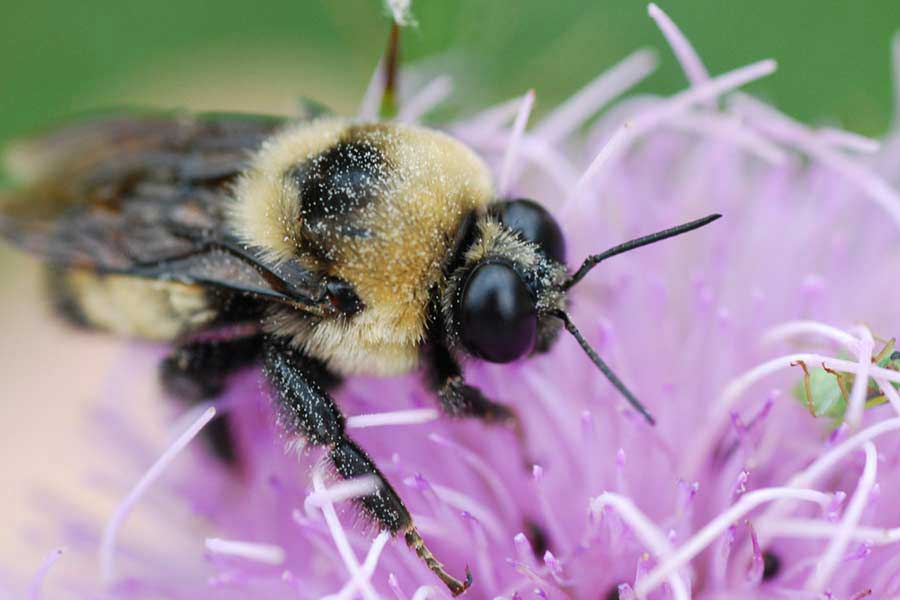Have you heard the buzz about bees? Disturbing losses of bee colonies has become an urgent societal issue. In recent years, we learned about Colony Collapse Disorder (CCD), a mysterious and devastating loss of bee colonies in the U.S., Canada, and Europe. The first reports of these unexplained and catastrophic bee deaths began in 2006. In the 2006-2007 season, CCD affected about 23 percent of commercial U.S. beekeepers, and some beekeepers lost 90 percent of their hives. Since then, CCD has shown no signs of slowing; substantial yearly losses of bees, 30 percent or higher has become the norm.1-2
Answers started to surface in 2007. Scientists began to identify viruses in U.S. bee colonies that had suffered CCD.1 Soon, it was known that healthy and CCD-stricken colonies were plagued with numerous viruses and parasitic microbes, and seemed to have impaired ability to produce proteins that protect against infection.2-3 Scientists then began to ask whether there was an environmental factor that was causing the bees to be vulnerable to viral attack.
Pesticides Linked to Bee Loss
In early 2012, two studies published in Science implicated a class of pesticides called neonicotinoids. Neonicotinoids are a class of neuro-active insecticides similar to nicotine. In these studies, bees exposed to neonicotinoids exhibited a reduced growth rate, produced fewer queens, or had impaired navigation and food-gathering abilities. The scientists concluded that neonicotinoids, although the commonly encountered doses may not be directly lethal to bees, could contribute to CCD in an indirect way: by harming bees’ abilities to grow, return home to their hives, or get adequate nutrition.4-6


